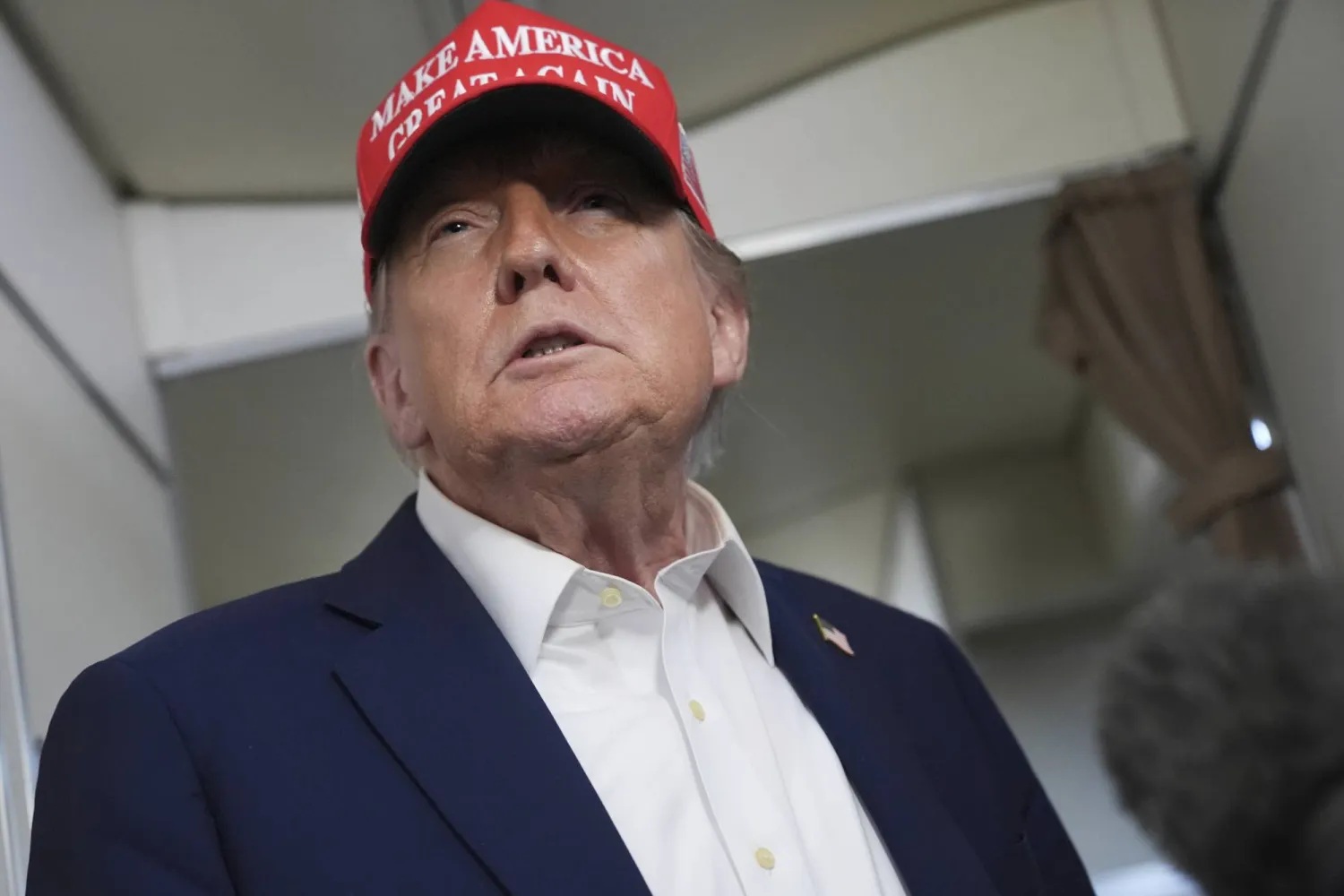United States President Donald Trump has reiterated that Iran has neither agreed to allow inspections of its nuclear program nor committed to halting uranium enrichment.
Speaking to reporters aboard Air Force One on Friday, July 4, 2025, Trump expressed confidence that Tehran’s nuclear ambitions had been “set back permanently.”
However, he acknowledged the possibility that Iran might attempt to restart its nuclear activities at a different, undisclosed location, a development he warned would be problematic.
As he traveled to New Jersey following the Independence Day celebrations at the White House, Trump revealed plans to meet Israeli Prime Minister Benjamin Netanyahu on Monday.
The two leaders are expected to discuss a potential ceasefire in Gaza, though Iran’s nuclear program will also be high on the agenda.
“I would think they’d have to start at a different location,” Trump said of Iran’s nuclear efforts.
“And if they did start, it would be a problem.”
He further emphasized his administration’s resolve to prevent Iran from resuming nuclear development and mentioned that Iranian officials have sought to meet with him.
The backdrop to Trump’s comments is a tense standoff involving the International Atomic Energy Agency (IAEA), which announced on Friday that it had withdrawn its inspectors from Iran.
This move came amid a deepening dispute over their return to Iran’s nuclear facilities, sites that have been recently targeted and bombed by both the United States and Israel.
The U.S. and Israel accuse Iran of enriching uranium as part of a covert effort to build nuclear weapons.
Tehran denies these claims, insisting that its nuclear program is intended solely for peaceful civilian purposes.
Notably, neither U.S. intelligence agencies nor Rafael Grossi, the head of the UN’s nuclear watchdog, have found conclusive evidence that Iran is pursuing a nuclear bomb.
The escalation began three weeks ago when Israel launched a series of military strikes on Iran’s nuclear installations during a 12-day conflict with the Islamic Republic.
The U.S. joined its ally by conducting large-scale airstrikes on June 22 targeting key nuclear sites.
Since the onset of these hostilities, IAEA inspectors have been unable to carry out on-site inspections, despite Grossi emphasizing that restoring monitoring is a top priority.
In his recent statements, Grossi highlighted the “crucial importance” of resuming dialogue with Iran to reestablish monitoring and verification procedures as soon as possible.
Growing Distrust of the IAEA
Following the U.S. and Israeli attacks, Iran has openly expressed deep mistrust toward the IAEA.
Though Iran maintains it remains committed to the Treaty on the Non-Proliferation of Nuclear Weapons (NPT), Tehran has sharply criticized the agency.
Tehran accused it of failing to condemn the Israeli and U.S. strikes.
The tension escalated when the IAEA passed a resolution on June 12 condemning Iran for non-compliance with its nuclear obligations—just one day before Israel’s initial air raids.
In a significant development this week, Iran’s President Masoud Pezeshkian ordered a suspension of cooperation with the IAEA.
This move follows the passage of a bill in Iran’s parliament, which was subsequently approved by the powerful Guardian Council.
The Guardian Council’s spokesperson, Hadi Tahan Nazif, justified the decision.
Nazif said it was taken “out of full respect for the national sovereignty and territorial integrity of the Islamic Republic of Iran.”
According to Iranian state media, the suspension will remain in place until certain conditions are met.
These conditions include assurances over the security of Iran’s nuclear facilities and the safety of its scientists.
Although the IAEA states that it has not yet received formal notification from Iran regarding the suspension, the timeframe for inspectors’ return remains uncertain.
On Monday, Iranian Foreign Minister Abbas Araghchi dismissed Grossi’s request to visit the nuclear sites targeted by the recent bombings.
“Grossi’s insistence on visiting the bombed sites under the pretext of safeguards is meaningless and possibly even malign in intent,” Araghchi said.
His comment signaled Tehran’s ongoing resistance to international oversight.
The Damage and Uncertainty
The U.S. claims that the recent military strikes either destroyed or severely damaged Iran’s three primary uranium enrichment facilities,.
On the other hand, there remains considerable uncertainty about the fate of much of Iran’s enriched uranium stockpile.
This includes over nine tonnes of enriched uranium, notably the more than 400 kilograms enriched up to 60 percent purity.
Although this level of enrichment is not yet weapons-grade, which generally exceeds 90 percent, it is a significant step closer to potential nuclear weapons development.
As diplomatic efforts and military tensions continue to unfold, the situation remains volatile.
The world watches closely as Iran’s nuclear program and the broader Middle East conflict intersect, with far-reaching implications for regional and global security.



